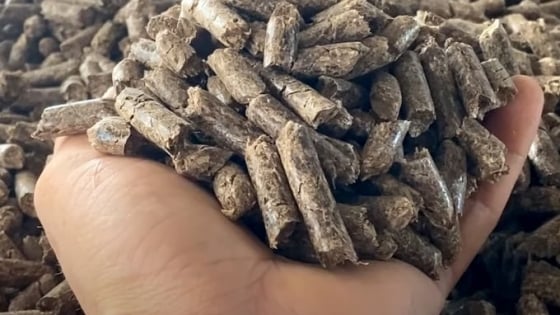(VAN) To sustainably develop the pellet production industry, Vietnam needs to expand its consumption market, aiming at the EU market, where there is still a lot of geographical balance for this industry.
The EU market still has a lot of geographical balance
According to the Vietnam Timber and Forest Product Association (VIFOREST), Vietnam currently has 83 businesses directly participating in exporting pellets and over 300 pellet production facilities. Compared to export demand, Vietnam has a relatively weak force of pellet manufacturing businesses, with export scale concentrated only in a few large companies.
Mr. Do Xuan Lap, Chairman of VIFOREST, said that in 2023, Vietnam’s pellet export turnover tended to decrease slightly with an amount of more than 4.6 million tons; the total export value was approximately USD 680 million, down 13.7% compared to 2022. Vietnam’s pellet export price in 2023 reached an average of USD 145.5/ton, down 9.7%.
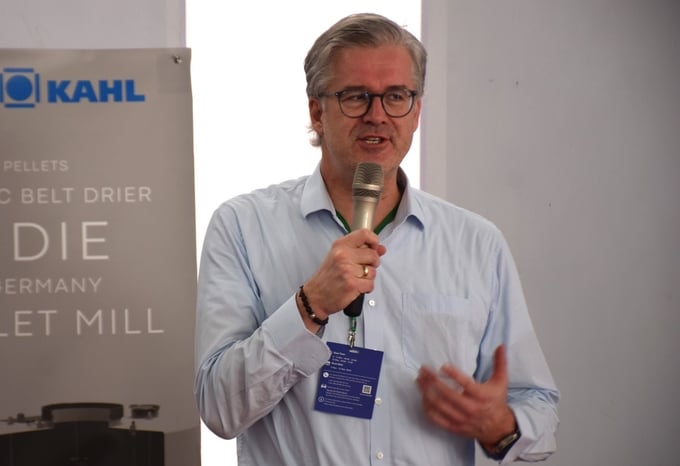
Mr. Olaf Naehrig, chief engineer of KAHL Group in Vietnam, said that the EU market still has a lot of geographical balance for Vietnamese pellets. Photo: V.D.T.
“In 2023, the Japanese market’s import demand for pellets remained stable, increasing 12.4% in volume and 14% in value compared to 2022. Meanwhile, South Korea’s demand for importing Vietnamese pellets is on a strong downward trend, decreasing 24.5% in volume and 43.4% in value due to alternative supply sources from Russia,” shared Mr. Do Xuan Lap.
According to Mr. Nguyen Thanh Phong, COB of Phu Tai Bio-energy Corporation (Binh Dinh) and Head of the Vietnam Wood Pellet Branch under the VIFOREST, in the first 6 months of 2024, Vietnam’s pellet output exported to the Japanese and South Korean markets increased, but the price decreased compared to before.
“At the end of 2023, the price of pellets exported to the Japanese market was still USD 148/ton. However, in the first 6 months of 2024, the price was only USD 120/ton. The price of pellets exported to South Korea was even lower, just under USD 100/ton,” said Mr. Nguyen Thanh Phong.
According to Mr. Xuan Phuc, policy analyst at the Forest Trends Organization, in the coming time, the Japanese market will continue to play an important role in Vietnam’s pellet production. Vietnamese businesses also have the opportunity to replace the supply of Indonesian pellets for the Japanese market because the supply of pellets made from palm oil shells originating from Indonesia may not achieve the sustainability certification required by the Japanese market.
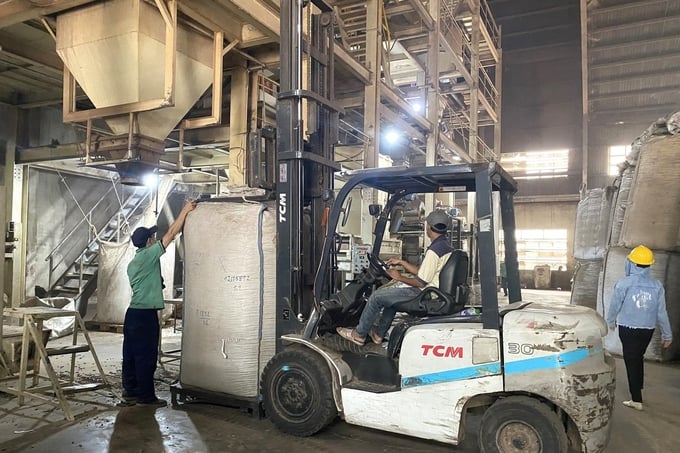
Pellet production needs to apply advanced technology to take advantage of raw materials such as elephant grass, corn stalks, or sugarcane bagasse. Photo: V.D.T.
To reduce dependence on the two markets of South Korea and Japan, Mr. To Xuan Phuc recommended that pellet manufacturing businesses learn and promote consumption in new markets such as the EU market and the domestic market.
“Currently, the demand for wood pellets and chips for domestic consumption is likely to increase in the future due to the Vietnamese Government’s commitment to reduce emissions as well as businesses voluntarily converting from high-emission raw materials to pellets, especially if the Government issues policies to encourage the conversion,” Mr. To Xuan Phuc shared.
Sugarcane bagasse, corn stalks, and elephant grass can all be raw materials
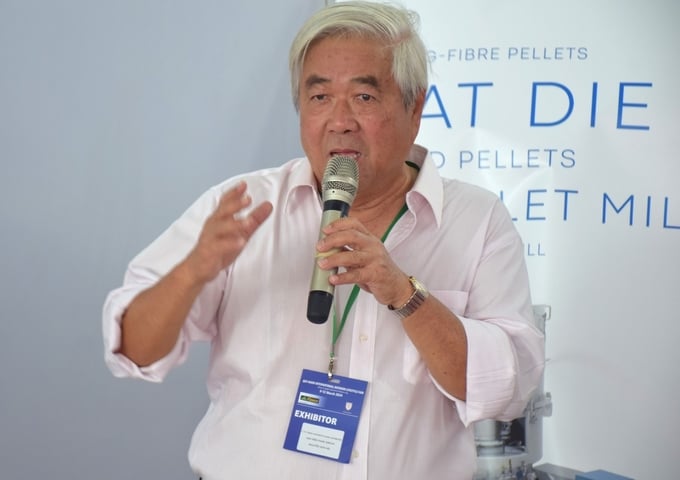
Mr. Nguyen Son Ha, representative of KAHL Group in Vietnam, shared his experience in pellet production. Photo: V.D.T.
Also commenting similarly to Mr. To Xuan Phuc, Mr. Olaf Naehrig, chief engineer of KAHL Group in Vietnam, said that the EU market currently accounts for a small proportion of Vietnam’s pellet import markets, only accounting for 3.3% of total exported pellets and 3.8% of total turnover. In 2023, the EU market imported over 155,000 tons of Vietnamese pellets, reaching approximately USD 26 million, an increase of nearly 3 times in volume and 3.7 times in value compared to 2022. This is a good sign for Vietnamese pellets on the EU market.
According to Mr. Nguyen Son Ha, representative of KAHL Group in Vietnam, raw materials for pellet processing in Vietnam are not sustainable in origin and quality. In particular, raw materials for pellet production are increasingly rare and must compete fiercely for the source of planted forest wood with the wood and wood chip processing industry. For sustainable development, nothing other than Vietnam’s pellet processing industry needs to change technology and find alternative raw materials.
“KAHL is the first unit in the world to produce pellets with sugarcane bagasse. KAHL’s technology is to use a lying mold and run six rollers to press down the bagasse. Currently, KAHL is the only unit that can produce 10–12 tons of pellets/hour. The more modern the technology, the lower the product price and the higher the product quality to be able to compete in the market,” said Mr. Nguyen Son Ha.
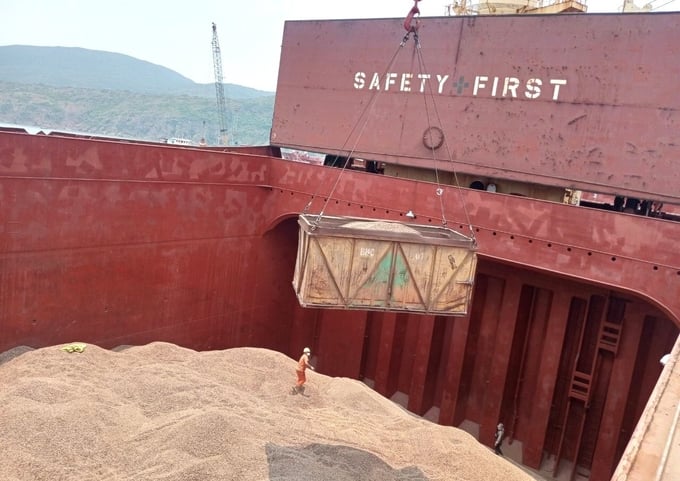
In the first 6 months of 2024, the price of pellets exported to the Japanese market was only USD 120/ton, and the price of pellets exported to South Korea was just under USD 100/ton. Photo: V.D.T.
According to Mr. Ha, the advantage of Vietnam’s pellet production industry is that there are many businesses that produce wooden furniture. Wastes and by-products from wooden furniture processing would be very wasteful if thrown away. These are the best raw materials for pellet production. Utilizing sawdust and wood chips to produce pellets also helps reduce environmental pollution, as businesses do not have to burn or destroy them. Pellets produced in Vietnam are favored in the Japanese market because, when burned, there is no smoke, meaning no CO2 emissions.
“The raw materials for pellet production are not only acacia trees, but elephant grass, corn stalks, or sugarcane bagasse can also be used. All agricultural by-products that can be burned are raw materials for pellet production. To produce pellets with raw materials from agricultural wastes and by-products, production technology does not have to change much, but businesses need to find a suitable customer group,” said Mr. Nguyen Thanh Phong, Head of the Vietnam Wood Pellet Branch.
Agriculture News | Agri Products Price



